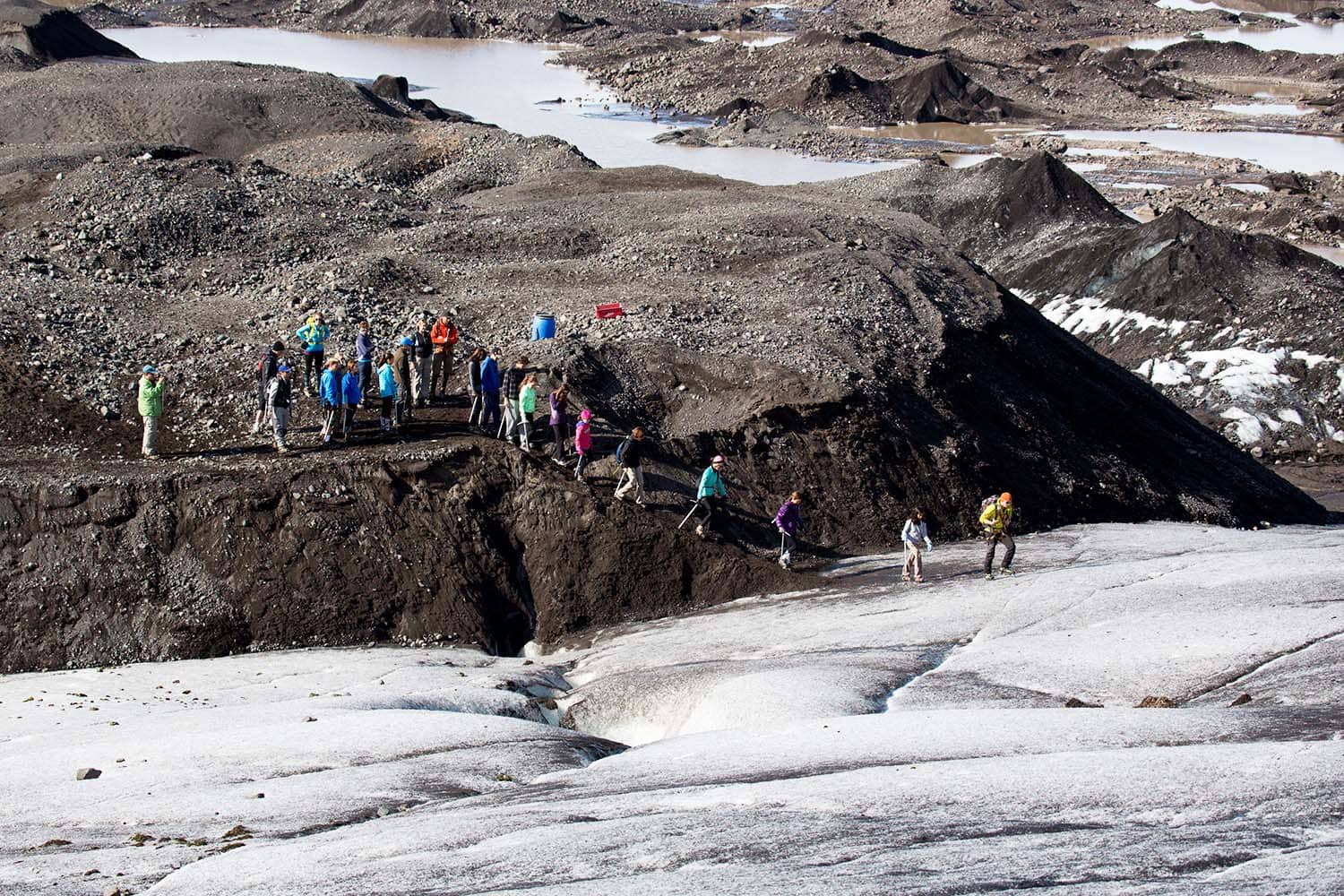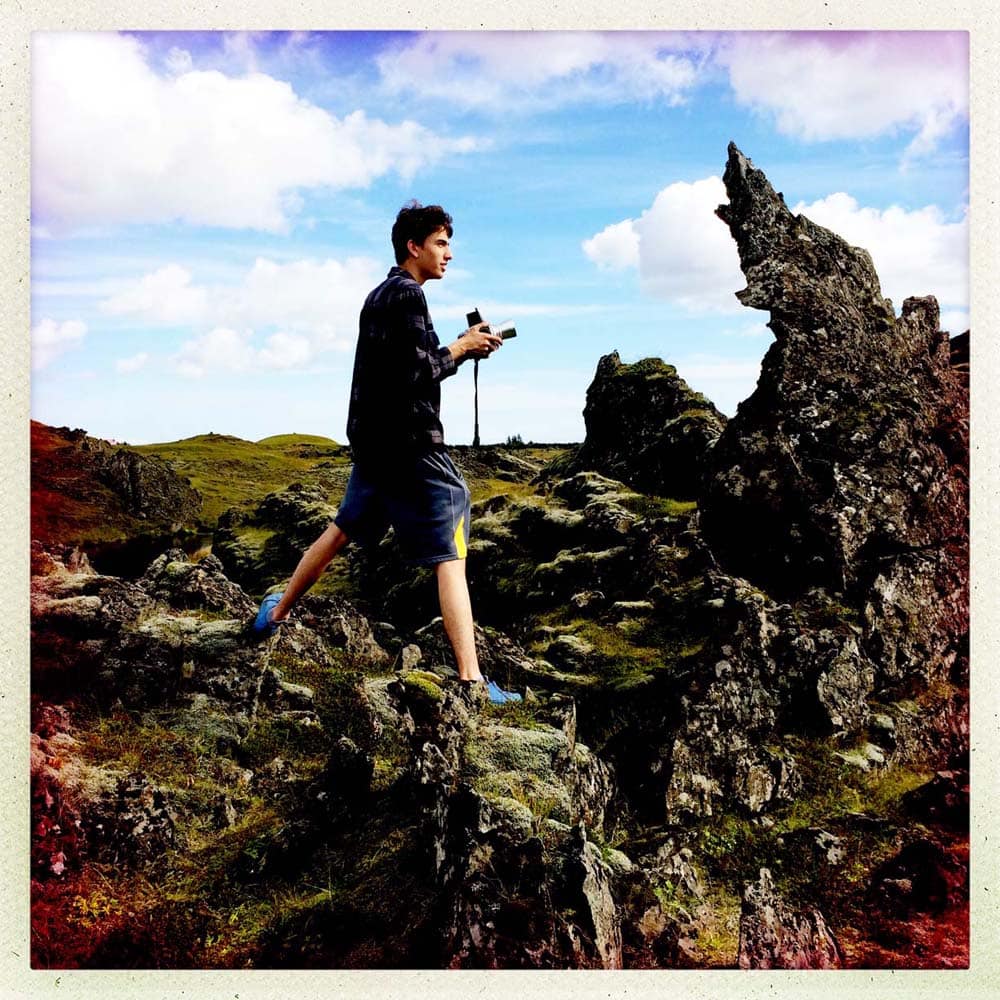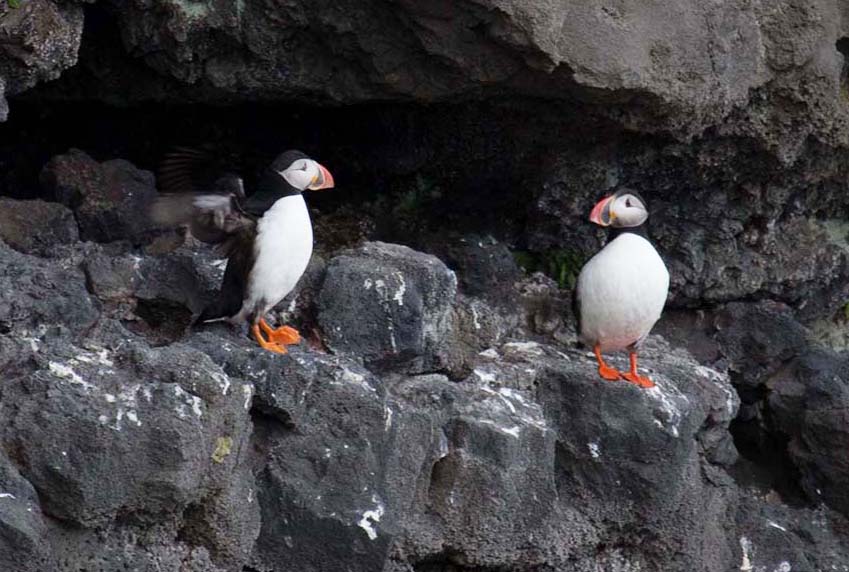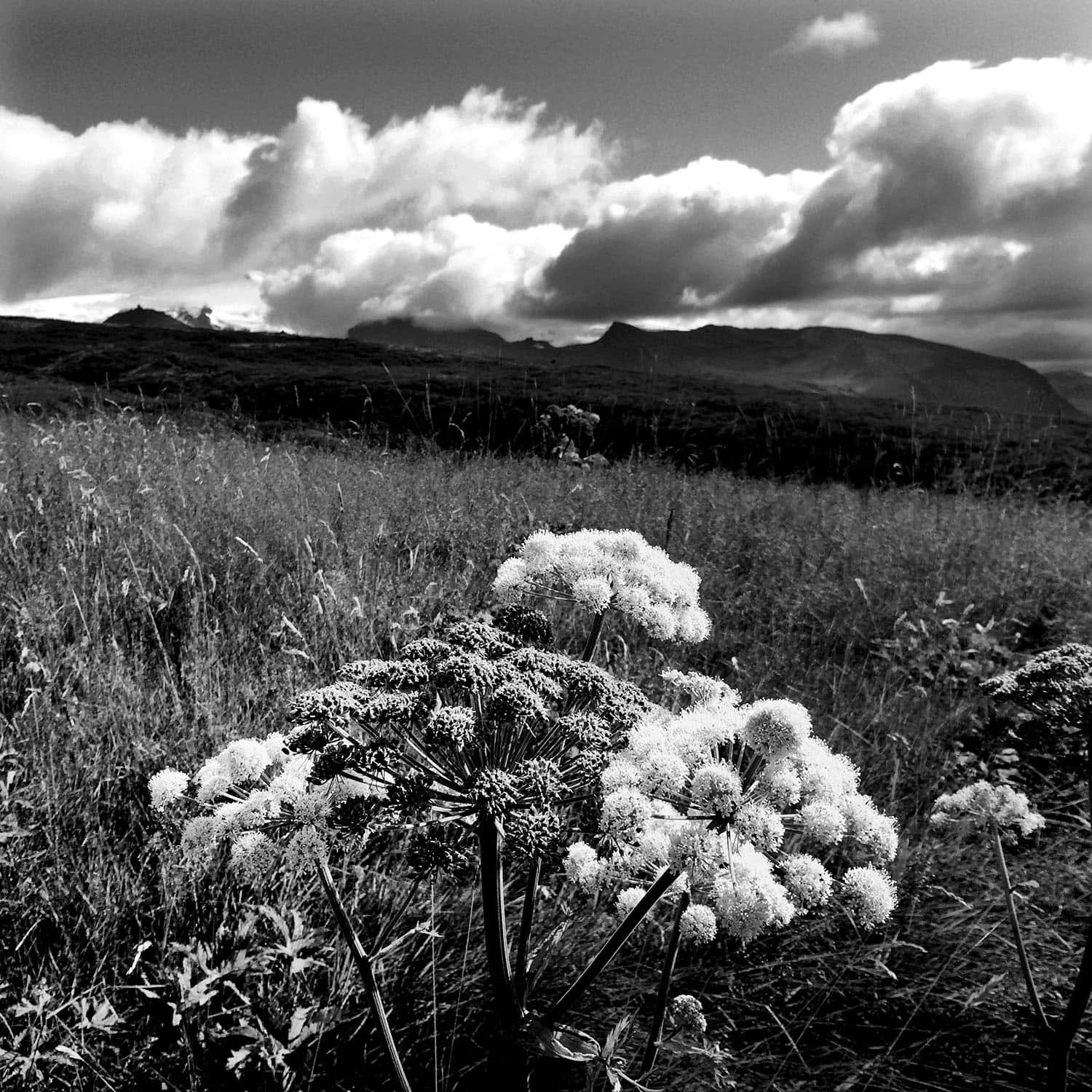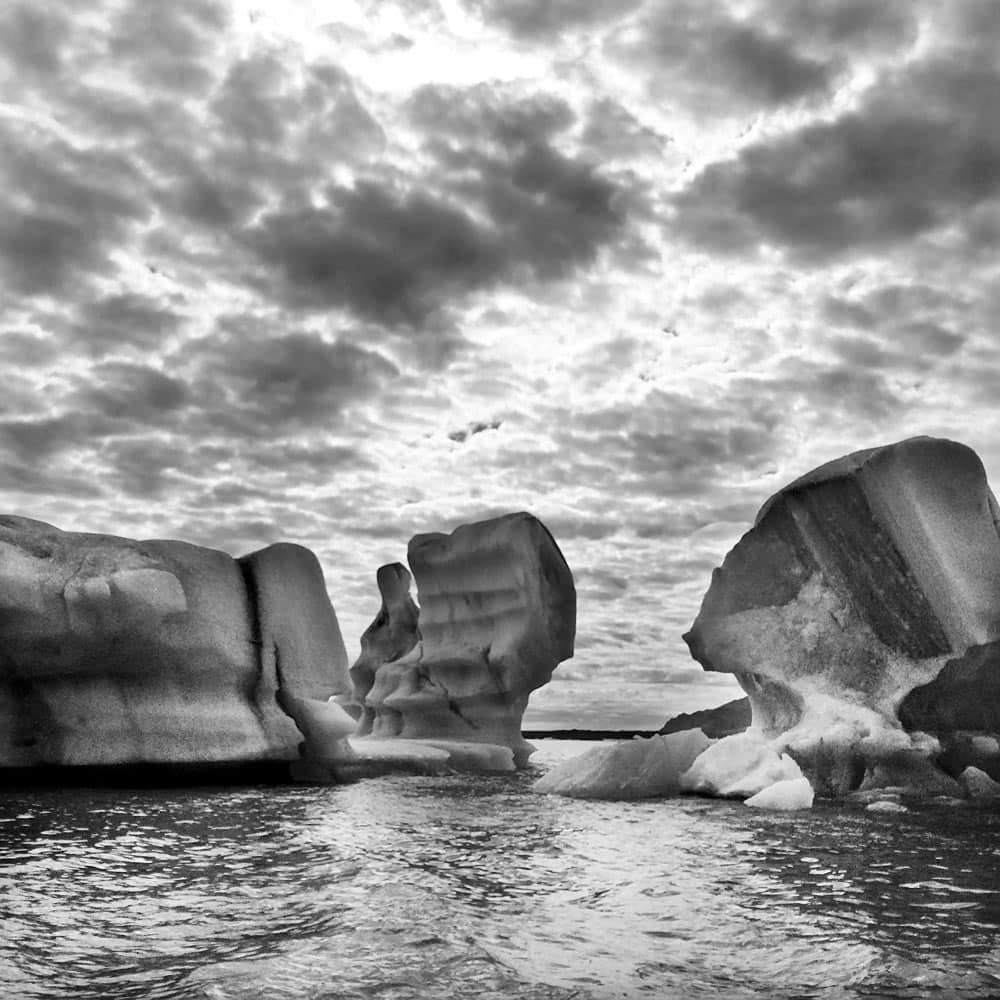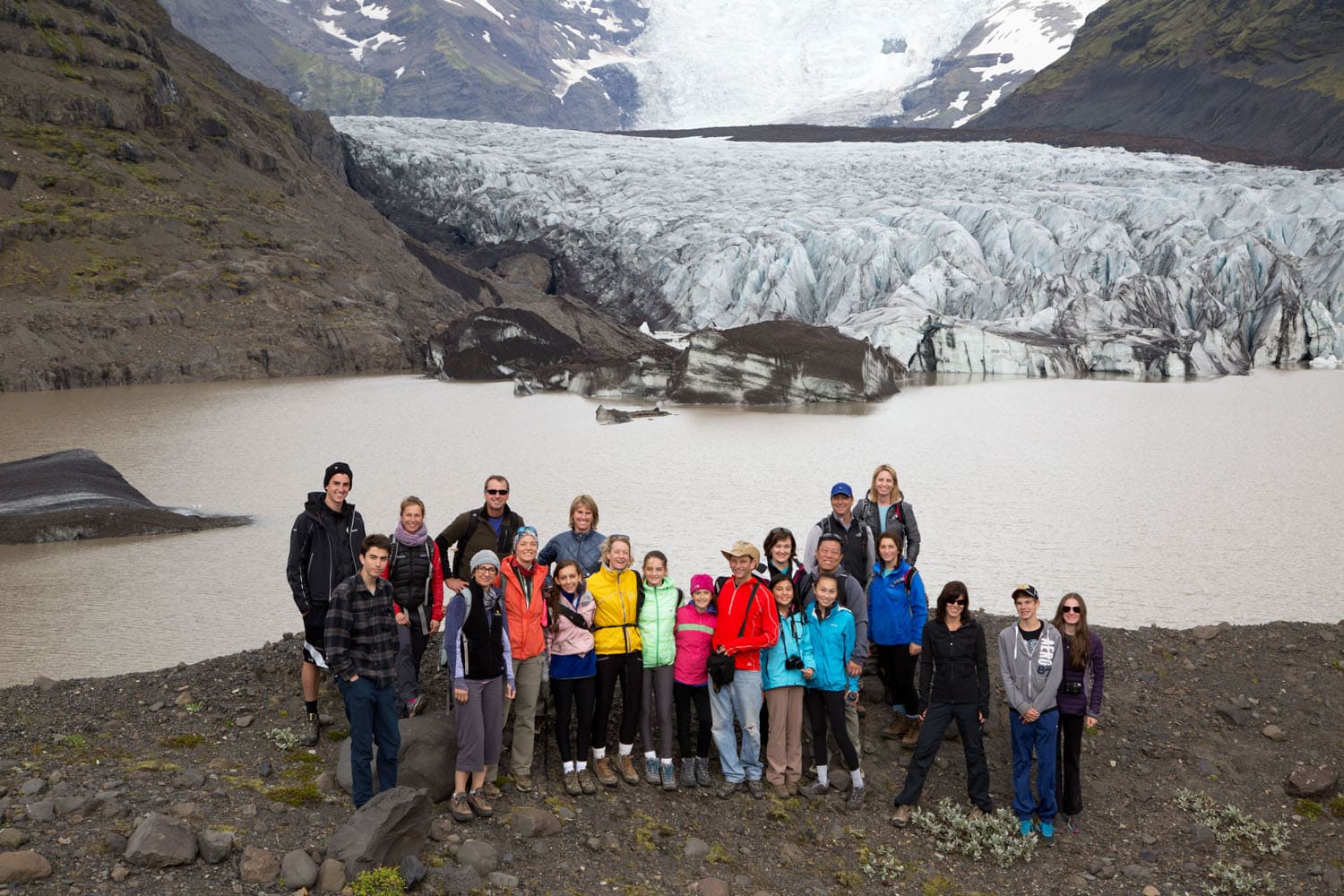We started our day by strapping on crampons and heading up to the Falljokull Glacier (actually, "Jökull" means "glacier" in Icelandic). A river runs under the glacier, and most of our merry band filled their water bottles from the frigid, sparkling, delicious stream. From where we stood, the top of the glacier field is filled with crumbling wall, and numerous crevasses and water cauldrons dot the landscape. One of my favorite finds were "glacier mice." The Audubon Magazine said, "The frigid, barren expanses of glaciers may not be as hostile to life as long thought--bizarre creatures have been discovered thriving inside mysterious balls of moss called "glacier mice. A pebble serves as the anchor, with moss growing around it." Our guide said these green mice take 40+ years to develop, and are very friendly . . .
All that glacial walking left us hungry, so our next stop was for lunch at a farmhouse. An outstanding feature of the place was that it had the most extraordinary backyard. Beautiful natural volcanic sculpture jutted out of the landscape, and made for a dramatic scene. James shot a few photos of the natural wonders with his Hasselblad, and also memorialized four of the girls who were with us.

Showing my young friends how to take pictures with the Nokia Lumia 1020--it's about to become my new favorite camera phone
Then it was on to the next location, (our Backroads shepherds Jillian, Zuzanna, and Eva), kept us busy, but not exhausted!). We were off to Dyrholaey, a 400-foot-high coastal promontory on the southernmost point in Iceland. I was excited to see the puffins living in the cliffs, because shooting birds, (photographically speaking), is one of my real pleasures.
Coming up soon, Iceland - Day 4!

